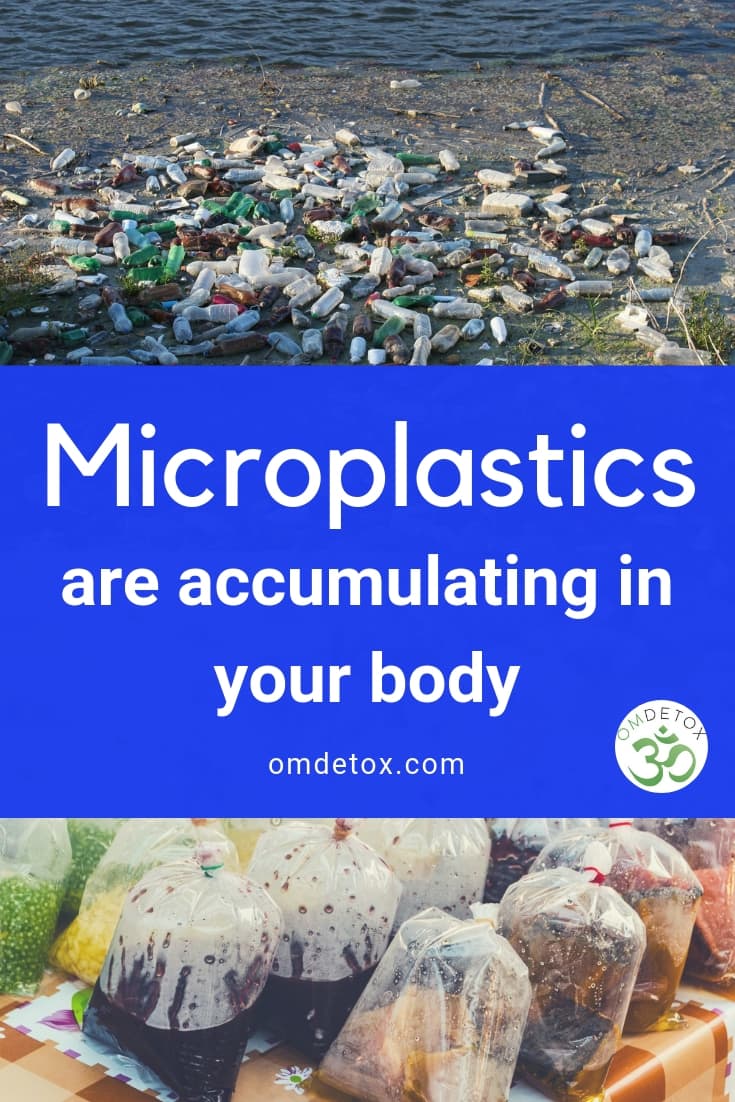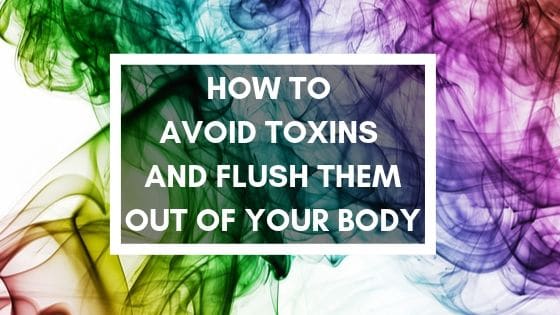Have you heard of microplastics?
Those tiny little pieces of plastic get into our bodies and circulate everywhere, which affects our health in many ways.
They can impact our immune system, our digestive system, our endocrine system and more…
Why do we have micro plastics in our bodies?
You probably already know this… our oceans are full of plastic!
By the year 2050, the World Economic Forum thinks that our oceans will contain more plastic than fish… that’s pretty sad!
The plastic disintegrates and the fish eat the microplastics… and we eat the fish!
But microplastics don’t only come from the fish we eat, we also get them from the water we drink and the air we breathe…
A recent study by the Environment Agency Austria estimated that more than half of the world population may have microplastics in their stools.
What Are Microplastics?
Plastic is a material that is made of different petrochemicals and semi-synthetic organic compounds like polylactic acid (from corn).
Microplastics are tiny pieces of plastic that come from bigger pieces of plastic that have disintegrated, or from products like exfoliants or clothing.
When plastic bottles and containers end up in the ocean, they are exposed to sunlight and start to breakdown.
Microplastics will move with currents and will be found throughout the oceans. Microplastics are consumed by wildlife, which is a huge problem. Microplastics kill the animals and poison the humans that consume seafood.
Different types of microplastics:
- Fibers: Plastic fibers are found in products like cigarette butts, diapers, and fleece clothing. Unlike cotton or wool, fleece microfibers are not biodegradable. They get into our waterways through our washing machines.
- Microbeads: These non-biodegradable plastic particles are found in facial cleansers, exfoliants, and toothpaste. Microbeads measure less than one millimeter in diameter and fish often mistake them for food.
- Fragments: These are the result of pieces of plastic that break off from larger pieces and then break down in smaller pieces by sun exposure. This is what happens to water bottles and cutlery in the oceans.
- Nurdles: These are small plastic pieces used to manufacture plastic goods. They sometimes spill out of trucks during delivery due to their small size and then end up in storm drains and in our waterway. Fish also mistake nurdles for food.
- Foam: Styrofoam is most commonly used to make coffee cups and food containers. Its chemicals can leach into our food. You should never reheat food in a styrofoam container because the risk of toxic exposure is greater. And of course, styrofoam breaks down into smaller pieces.
It is estimated that about eight million metric tons of plastics get into the oceans annually, and approximately 5.25 trillion plastic particles are currently circulating in the ocean waters… and 80 percent of them would be from land-based sources.
Why are Microplastics dangerous?
After we ingest microplastics, they circulate from our gut into our blood where they are carried through the lymphatic system and into our internal organs.
Microplastics can accumulate in the liver, the kidneys and the gut.
According to “Microplastics in Seafood and the Implications for Human Health,” the accumulation of microplastics in the body has been shown to have negative health effects on our inflammatory responses, oxidative stress, nutrient absorption, gut microbiome, and reproduction.
Another concern with microplastics is that they contain endocrine-disrupting chemicals. Ingesting them regularly can lead to negative changes to your endocrine systems.
Think about it… so many people now have thyroid issues, hormone-sensitive cancers, and reproductive difficulties. I think this could be linked to our consumption of plastics.
Microplastics in water
As you may know, tap water toxicity is also a concerning health topic in the United States and around the world. Sadly, microplastics are present in our drinking water. According to one investigation, 83% of major metropolitan areas around the world had plastic fiber contamination in their water.
You may think that water bottles are a safer choice…
but they’re not! The World Health Organization (WHO) published an analysis revealing that 90% of some of the world’s top bottled water brands contained tiny pieces of plastic.
93% of the water bottles tested showed sign of microplastic contamination from polypropylene, nylon or polyethylene terephthalate (PET).
Microplastics are even in the air
According to a research published in April 2019, microplastics are even circulating in the air!
In a study published in the journal Nature Geoscience, French researchers reported that thousands of microplastic particles were found in the atmosphere of Pyrenees, a mountain region of France.
This study shows that microplastics can travel through the air for at least 60 miles (95 km).
Microplastics in salt
Because micro plastics are accumulating in our oceans, we can now find them in sea salts and seaweed products.
This is why it may be a wiser choice to buy pink Himalayan salt rather than sea salt…
How to Avoid Microplastics
This is a tough one! Because micro plastics are everywhere…
One way to avoid microplastics is to stay away from all seafood and fish products. Not only they contain microplastics but they are also full of heavy metals.
You can also filter your water with carbon filters and reverse osmosis systems.
Certain carbon filters can remove chlorine, asbestos, lead, mercury and volatile organic compounds (VOCs). However, carbon filters can’t remove arsenic, fluoride, nitrate or percholate.
Some filters may also only remove chlorine…
Reverse osmosis filters are more expensive but they can trap any molecule bigger than water. They are definitely the most effective!
You can also avoid microplastics by staying away from plastic water bottles, styrofoam and any products that contain microbeads.
How to detox from micro plastics
The best way to detox from micro plastics is to cleanse regularly with detoxing foods or/and to do a long fast.
I suggest my 7-day detox and colon cleanse once per year to eliminate accumulated toxins such as plastic and heavy metals.







